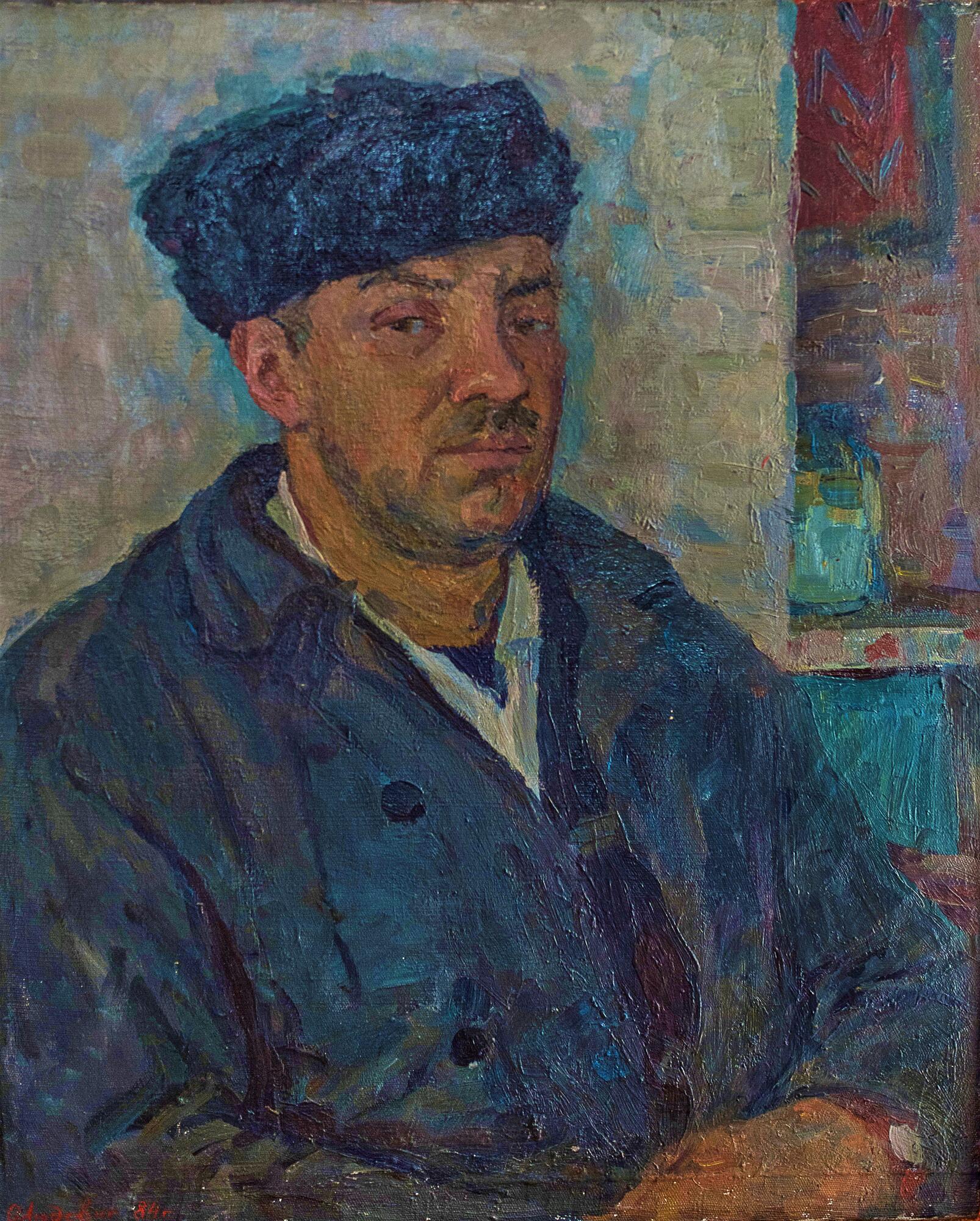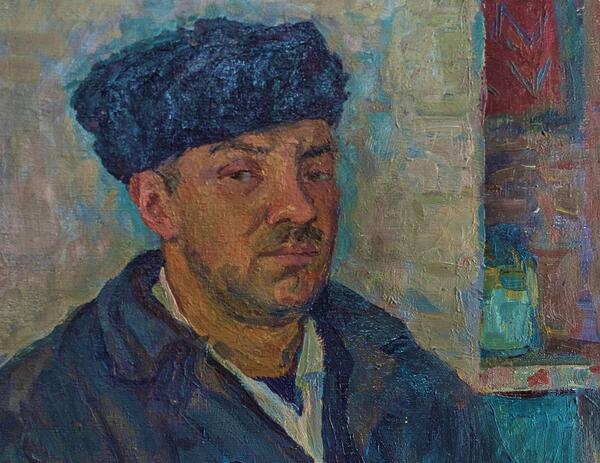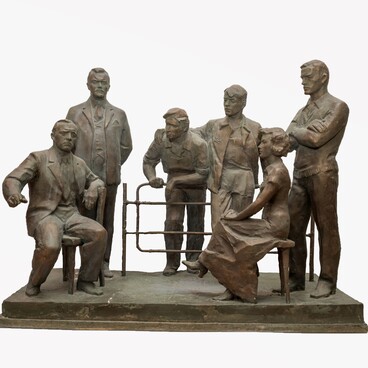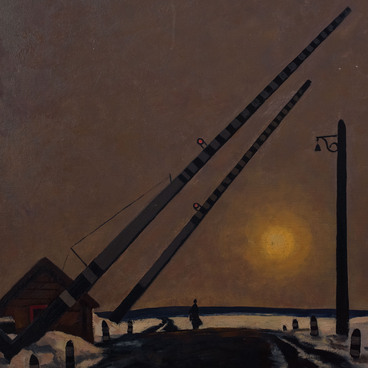Olga Ludevig created the painting “Ivan Tsvetkov” in 1984, it is a genre art portrait.
Genre art is the pictorial representation in any media: sculpture, painting and graphics. In paining, it usually depicts typical social scenes and characterizes established traditions. Artists tend to choose up-to-date events as subjects of their works. Paintings differ in size and the level of realistic depiction of objects.
Unlike the classic portrait, the genre portrait is not solely focused on one person. It allows an artist to convey not only characteristic traits and personality of depicted people but also features of their small world and everyday life. Simplicity, ordinariness and realistic portrayal are always the main elements of such works and ordinary people are the main characters, who are depicted in their usual environment.
Olga Ludevig’s painting is a waist-length portrait of a man in a dark blue jacket and a black hat. The background is grayish-blue and one can see a blurry image of the interior of the adjacent room on the right side of the canvas.
Olga Ludevig was born in 1921 in a family of German intelligentsia in Petrograd. Her father Nikolai Ludevig was a sailor, designer of sailing ships and yachts; he was one of the first Russian yachtsmen and an organizer of sports competitions. Nikolai Ludevig was the author of the first textbook in the USSR on sailing “Sailing. An Elementary Guide for Beginners”. The mother of the future artist Elena Ludevig worked as a librarian at the Academy of Sciences.
Olga studied at the secondary school at the Academy of Fine Arts. Before the war, the family lived in the outskirts of the city, in Staraya Derevnya, not far from a Buddhist temple. A small wooden house of the Ludevig family was designed by Olga’s father and it did not have running water or electricity. She recalled: “Father refused to buy a stolen cable so we used kerosene lamps.”
During the Great Patriotic War, Olga Ludevig was a student of the Moscow State Academic Art Institute named after V. I. Surikov and along with other artists was evacuated to Samarkand. Her parents stayed in beleaguered Leningrad: her mother lived in barracks in the Botanical Institute most of the time and her father, who was left alone, died of exhaustion on April 20, 1942.
Olga Ludevig was able to graduate only in 1951 and since then, she started to participate in art exhibitions. She was commissioned by the state to create paintings on different themes.
Genre art is the pictorial representation in any media: sculpture, painting and graphics. In paining, it usually depicts typical social scenes and characterizes established traditions. Artists tend to choose up-to-date events as subjects of their works. Paintings differ in size and the level of realistic depiction of objects.
Unlike the classic portrait, the genre portrait is not solely focused on one person. It allows an artist to convey not only characteristic traits and personality of depicted people but also features of their small world and everyday life. Simplicity, ordinariness and realistic portrayal are always the main elements of such works and ordinary people are the main characters, who are depicted in their usual environment.
Olga Ludevig’s painting is a waist-length portrait of a man in a dark blue jacket and a black hat. The background is grayish-blue and one can see a blurry image of the interior of the adjacent room on the right side of the canvas.
Olga Ludevig was born in 1921 in a family of German intelligentsia in Petrograd. Her father Nikolai Ludevig was a sailor, designer of sailing ships and yachts; he was one of the first Russian yachtsmen and an organizer of sports competitions. Nikolai Ludevig was the author of the first textbook in the USSR on sailing “Sailing. An Elementary Guide for Beginners”. The mother of the future artist Elena Ludevig worked as a librarian at the Academy of Sciences.
Olga studied at the secondary school at the Academy of Fine Arts. Before the war, the family lived in the outskirts of the city, in Staraya Derevnya, not far from a Buddhist temple. A small wooden house of the Ludevig family was designed by Olga’s father and it did not have running water or electricity. She recalled: “Father refused to buy a stolen cable so we used kerosene lamps.”
During the Great Patriotic War, Olga Ludevig was a student of the Moscow State Academic Art Institute named after V. I. Surikov and along with other artists was evacuated to Samarkand. Her parents stayed in beleaguered Leningrad: her mother lived in barracks in the Botanical Institute most of the time and her father, who was left alone, died of exhaustion on April 20, 1942.
Olga Ludevig was able to graduate only in 1951 and since then, she started to participate in art exhibitions. She was commissioned by the state to create paintings on different themes.



